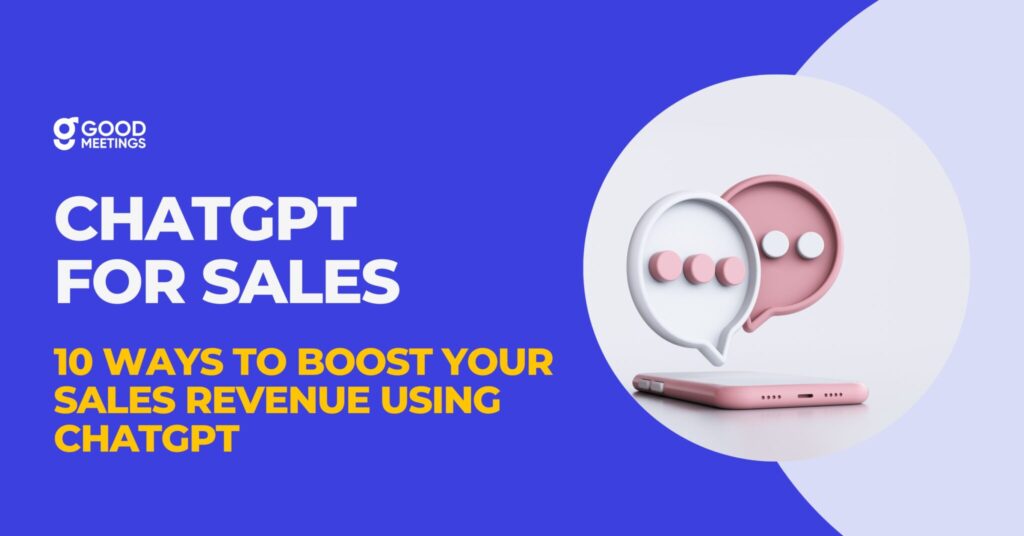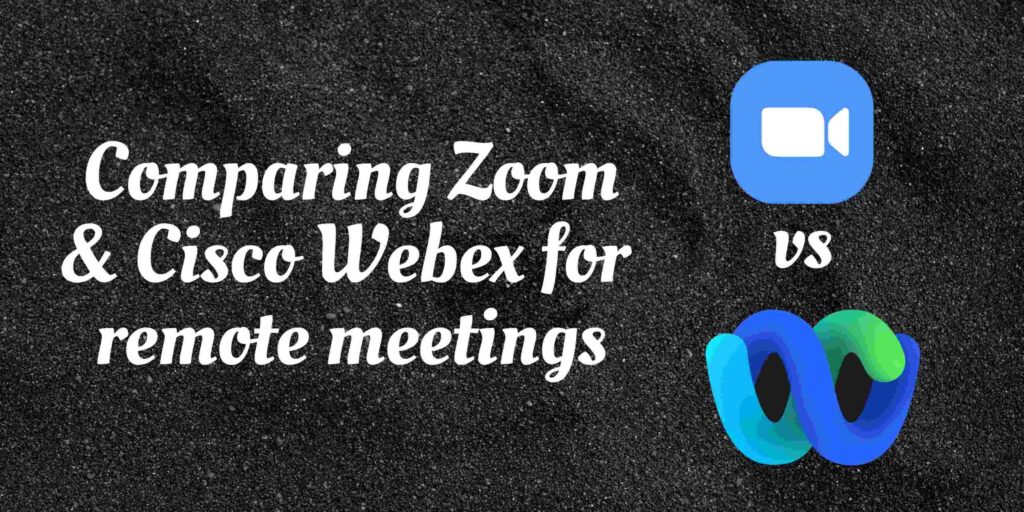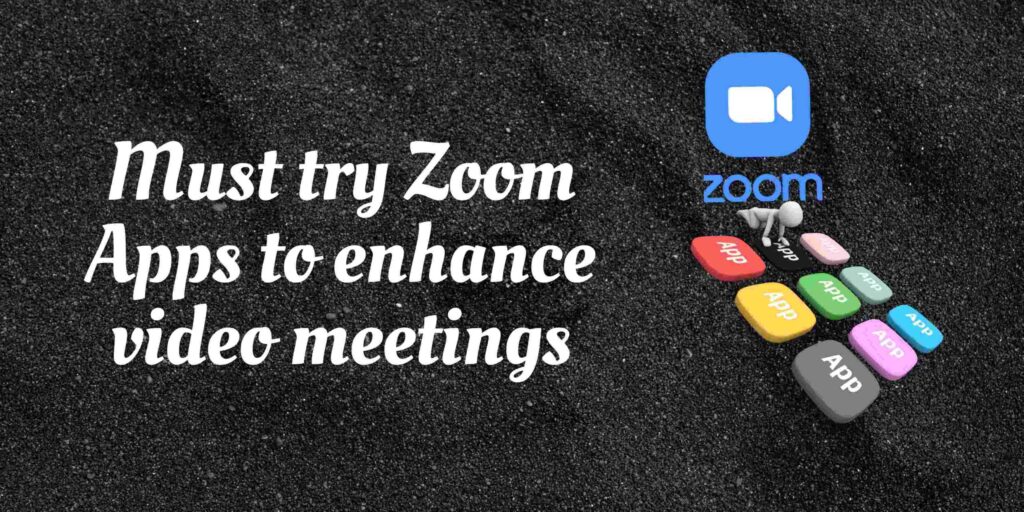Ever wondered why some sales demos clinch the deal while others fall flat? The secret often lies in the quality of your presentation.
A standout sales demo goes beyond mere skill. It’s about careful planning, understanding your prospect’s unique needs, and showcasing your product or service in a way that speaks directly to those needs.
So, what transforms a good demo into an exceptional one? How do you create a demo that truly connects with your audience, eases their concerns, and clearly presents your solution as the ideal choice?
In this easy-to-read guide, you’ll find insightful answers to all these questions. We’ll provide you with expert guidance on how to craft sales demos that will not only captivate your prospects but also lead to successful deal closures.
Plus, you’ll discover how having Goodmeetings, an AI-based sales meeting platform, in your arsenal will help you unlock the full potential of your sales demos.
What is a Sales Demo?
A sales demo (sales demonstration in full) is a strategic presentation or showcasing of a product or service, aimed at demonstrating its value to potential customers.
During a sales demo, you shouldn’t merely list the features of your offering. Instead, you should show how it can solve specific challenges, meet unique needs, or create new opportunities for your prospects.
What’s more, a sales demo is an interactive experience. It’s a dialogue (not a monologue) where the sales representative engages actively with the prospect, responding to their cues, questions, and concerns in real-time.
This interaction is key, as it allows the sales rep to tailor the presentation to the prospect’s interests effectively.
Now do you know what a sales demo is, let’s take a look at what it’s NOT:
- A feature dump: A common misconception is equating sales demos with exhaustive lists of features. While understanding the capabilities of a product or service is important, bombarding prospects with information irrelevant to their needs can overwhelm and disengage them.
- Inflexible: A sales demo isn’t a rigid, one-size-fits-all presentation. It’s supposed to be dynamic, meaning that it can easily adapt to the flow of conversation, questions raised by the prospect, and shifts in focus.
- Just about the sale: While the ultimate goal is to close a deal, effective sales demos focus on establishing a relationship and providing value. It’s about showing the prospect that their success is the priority, not just making a sale.
Sales Demos vs. Product Demos: Understanding the Difference
The terms “sales demo” and “product demo” are often used interchangeably. However, while both terms play important roles in the sales process, they’re slightly different.
A sales demo involves showing potential customers how your product or service works. A product demo is similar, but it’s for customers who already use your product.
The purpose of a sales demo is to make a sale, while a product demo is about helping existing customers get the most out of what they’ve already bought.
Why are Sales Demos Important?
As you may already know, the sales landscape is competitive. This is why it’s so important for you to stand out and make a lasting impression on prospects.
And thankfully, sales demos can help you do just that!
Let’s explore the key reasons why sales demos are an indispensable part of your sales toolkit:
1. They’re personalizable
Sales demos offer you the unique opportunity to personalize your pitch to the prospect’s specific needs and situation.
Unlike generic marketing materials, a well-crafted sales demo speaks directly to the prospect, demonstrating a clear understanding of their challenges and how your product offers the optimal solution.
2. They help you build trust and credibility
Through interactive and insightful sales demos, sales professionals like you can establish themselves as industry experts and trusted advisors.
By addressing prospects’ questions and concerns in real-time, demonstrating deep product knowledge, and showcasing how the product solves diverse problems, your sales demos can build a foundation of trust that’s crucial for any business relationship.
3. They accelerate the sales cycle
An effective sales demo can significantly shorten the sales cycle by moving prospects from interest to decision more swiftly.
By providing all the information needed in an engaging and interactive format, sales demos can help prospects reach a buying decision faster.
Research shows that customers who found the information from suppliers helpful were 2.8 times more likely to experience a high degree of purchase ease.
4. They boost your chances of sales success
Consider this: a high-performing sales team with average demo close rates of 50% generates $3.8m in annual sales opportunities!
What’s more, out of the all prospects that you deliver sales demos to, a whopping 80% represents where most of your revenue potential lies.
So, with a well-executed demo, you can not only showcase your product but also increase your chances of sales success.
5. They give you a competitive edge
As we mentioned earlier, sales demos allow you to showcase what sets your product apart from the competition.
It gives you a chance to explain how your offering provides unique features, superior service, or better pricing, which can largely tilt the scales in your favor.
Who Delivers a Sales Demo?
When it comes to delivering sales demos, sales representatives often take center stage. With a blend of product knowledge, understanding of customer needs, and persuasive communication skills, they’re well-positioned to showcase a product in the best light.
When Do You Deliver a Sales Demo?
Choosing the right moment to deliver a sales demo is crucial for its success. It’s about finding that sweet spot where the prospect’s interest and readiness align with your opportunity to showcase the value of your product or service.
Here’s how to identify that perfect timing:
- After initial interest: Once a prospect has shown initial interest in your solution, whether through an inquiry, responding to marketing materials, or expressing a need that aligns with your offering.
- Following a sales qualification process: After you’ve determined whether the prospect is a good fit for your product or service (by ensuring they have the need, budget, authority, and timeline that align with what you’re offering.)
Goodmeetings can help you with your qualification process! This handy tool allows you to generate scores and qualify leads based on responses from AI-generated Q&As.
- When the prospect asks: Once a prospect directly asks for a demo. This is a clear signal they’re interested and engaged, making it an ideal time to show what your product can do.
Related: Identifying Triggers & buying Signals in B2B sales calls
How to Prepare for a Sales Demo
In this section, we’ll show you how to craft a sales demo that not only informs but also engages and convinces your prospect.
But first, here are some essential questions to ask yourself when putting together a sales demo to ensure that it hits the mark:
- Who is my audience?
- What are their main pain points?
- What are their goals?
- What makes my product stand out?
- How can I make this demo interactive?
- What are the key features to highlight?
- What objections or concerns might the prospect have, and how can I address them?
- What is the desired outcome of the demo?
Now, let’s delve into how you can effectively prepare for a sales demo:
- Research your audience:Dive deep into understanding your prospect’s business, industry, and specific challenges. Then, use this information to personalize the demo.
With Goodmeetings, you can capture important moments of all your customer conversations & easily reference key points in your conversation.
- Practice your delivery: A confident and smooth presentation comes from practice. Rehearse your demo multiple times to ensure you’re comfortable with the material and can navigate your product or service effortlessly during the live presentation.
- Look for ways to humanize the demo: Infuse your demo with personal touches and relatable stories. This will help make your message more receptive and forge a stronger connection with your prospect.
- Confirm the demo: Ensure that you confirm the demo appointment with your prospect. This ensures that everyone is on the same page and ready for the presentation. A simple confirmation email or call can also be an opportunity to ask if there are any specific areas they’d like you to focus on during the demo.
- Set an agenda: You’ll also need to create a clear agenda, which should be communicated to the prospect. It’ll help them know what to expect before the demo starts and put them at ease. Plus, it allows you to keep your presentation organized.
- Check your tech: Before the demo, test all technology and equipment to avoid technical glitches. Ensure you’re comfortable with the software or platform you’ll be using and that your internet connection is stable.
- Put together a follow-up strategy: Decide in advance how you’ll follow up after the demo. Whether it’s a summary email, a call to answer further questions, or scheduling a follow-up meeting, have a plan to keep the momentum going.
As you prepare for your sales demo, remember:
It’s not just about showing off your product; it’s about crafting a narrative that leads your prospect to the conclusion that they can’t afford to pass up your solution.
Related: 20 Sales Productivity Tools To Boost Your Sales in 2024
7 Sales Demo Steps Which Close Deals
Let’s get into the nitty gritty of this guide. Here are seven steps to creating a sales demo that not only impresses but also closes deals.
1. Start with a strong opening & establish rapport
Begin by introducing yourself and sharing a bit about your background or your connection to the product.
This isn’t just about stating your name and role; it’s your first opportunity to connect on a personal level.
Ideally, you can mention something you’ve learned about the prospect’s business and express genuine enthusiasm for the chance to help solve their challenges. Building rapport early sets a positive tone for the entire demo.
2. Acknowledge the prospect’s needs
Before diving into your product, take a moment to reiterate the prospect’s specific needs or challenges.
You can do this by summarizing past conversations you and the prospect have had concerning their key pain points and goals.
This recap not only shows your attentiveness but also contextualizes the demo, reinforcing its relevance to the prospect’s needs.
What’s more, it shows you’re not just there to sell but to solve a problem. It helps the prospect feel heard and builds trust in your solutions.
3. Explain the product or service
With a solid foundation laid, detail how your product or service addresses the prospect’s specific needs.
As we mentioned earlier, avoid just listing features. Rather, connect each feature directly to a tangible benefit for the prospect.
Explain how these features will improve their operations, save time, reduce costs, or drive revenue.
4. Showcase success stories
Nothing builds confidence in your solution quite like success stories. Share examples of how your product has helped similar clients overcome similar challenges.
This not only provides proof of your product’s value but also helps the prospect visualize how your solution can fit into their own story.
For example, according to an example sales demo script crafted by Nutshell, you can tell a success story along these lines:
“Acme Corp [Customer] needed to automate low-value tasks for their sales reps and build a scalable sales process [Objective]. They rolled out our platform and built automations to handle data entry, information sharing, and research [Solution], allowing them to increase active selling time by 40% [Benefit].”
5. Address any questions the prospect has
Encourage questions throughout the demo and address them promptly and thoroughly. This interactive approach keeps the prospect engaged, clarifies any uncertainties, and tailors the demo to their interests.
6. Discuss ease of use and support
Prospects are not just buying a solution; they’re buying into the ease with which they can integrate and use it.
Demonstrate the simplicity and intuitiveness of your product, showing that its implementation and operation are as beneficial as its features.
You can also discuss the support structure in place to ensure a smooth transition.
7. Close the demo and set expectations for the next steps
Conclude your demo by clearly defining the next steps. Ensure the prospect knows exactly what the next stage involves and express your enthusiasm for moving forward together.
Whether it’s a follow-up meeting, a trial period, or additional documentation, setting expectations like this ensures that momentum continues beyond the demo.
Related: Sales negotiations: The art of closing a win-win deal
7 Sales Demo Best Practices
To turn your sales demos into deal-closing presentations, it’s essential to follow some best practices.
Let’s take a look at seven of them that you can leverage to make every demo your best demo:
1. Personalize your demos
No two customers are the same, so your demos shouldn’t be either. Tailor each demo to explain how your product addresses the specific needs, challenges, and interests of your audience. Personalization shows you understand and care about solving their unique problems.
2. Keep it concise
Time is precious, especially for busy decision-makers. Keep your demo focused and concise, covering only the most relevant aspects. Avoid overwhelming your audience with unnecessary details or lengthy explanations.
3. Always highlight the ‘why’
For every feature or benefit you present, tie it back to the ‘why’. Why does it matter to your prospect? Why is it a game-changer for their specific situation? Why is it superior to what your competitors offer?
By connecting the dots between your product and the prospect’s needs, you can make your demo more compelling.
4. Listen actively
A great demo isn’t just about talking; it’s about listening. Pay close attention to your prospect’s comments and questions.
Studies show that the best sales demos have a talk-to-listen ratio of 46:54.
Plus, Cognism states that during a demo, you should ideally speak 40% of the time while allowing the prospect to speak 60%.
Your prospect’s input can guide you in real time to focus on what matters most to them, making your demo more responsive and engaging.
5. Be flexible
You should also be prepared to deviate from your planned script based on the conversation flow. If a prospect shows interest in a particular feature or has specific concerns, be ready to adjust your demo to focus on what matters most to them.
6. Make the experience engaging
If you want to elevate your presentation and ensure it resonates with your audience, you need to foster an interactive environment.
You can do this by incorporating interactive elements and thoughtful questions into the demo to encourage active participation.
Consider this insight: When your customer answers a question, they need to spend 100% of their brain power – or they will sound distracted.
This statistic highlights the importance of crafting questions & discussions that require thoughtful engagement from your prospect.
7. Seek feedback and iterate
After each demo, take a moment to ask for feedback from your audience. What did they like? What could be clearer?
Use this invaluable input to refine and improve your future demos. Doing this will help you keep your presentations fresh and effective.
Related: 9 Virtual Selling Best Practices To Win In Remote Sales
Pro Tip: Improve Your Sales Demo Process Through Constant Learning
As you strive for sales excellence, keep in mind that the journey doesn’t end with perfecting your current sales demo.
You need to adopt a strong commitment to constant learning and improvement. The essence of enhancing your sales demo process lies in embracing the mindset that every demo is an opportunity to learn, adapt, and refine.
Here’s why continuous improvement is vital:
- Adapting to market changes: The sales landscape is perpetually shifting. New trends, emerging technologies, and changing customer expectations can quickly make your current sales strategies obsolete. Constant learning ensures your demos remain relevant and impactful.
- Refining sales techniques: Every sales demo provides a wealth of feedback and data. Analyzing this information allows you to hone your approach, personalize your pitches more effectively, and ultimately, close more deals.
- Staying ahead of the competition: Continuous improvement in your sales demo process can differentiate your offering and make your solution the obvious choice for prospects.
And, as you embark on this transformative journey, Goodmeetings ensures you don’t have to do it alone!
.png)
This AI-powered meeting insights platform offers several features designed to help sales reps like you supercharge their sales demos:
- AI-generated summaries and insights: After each demo, Goodmeetings provides detailed summaries and insights, highlighting key moments and action items. This feedback loop is invaluable for understanding what works and where there’s room for improvement.
- Call recording and high-quality transcriptions: With the ability to record and transcribe sales demos, Goodmeetings ensures you never miss a beat. Reviewing these transcripts can reveal patterns, prospect concerns, and opportunities to enhance your messaging.
- Meeting performance insights: You can also get access to valuable analytics that measure engagement, effectiveness, and overall performance of your sales demos. You can even use these insights to improve the quality of your follow-up process.
- Powerful coaching: Goodmeetings allows you to access AI-based and real-time human coaching, so you can receive guidance and support during your sales demos.
Wrapping Up
Mastering your sales demo is a journey of constant evolution, one that demands passion, preparation, and the right tools.
Armed with the insights from this blog post and the support of platforms like Goodmeetings, you’re not just ready to tackle your next demo; you’re set to knock it out of the park!





